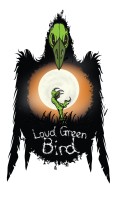
On the surface, Red Road (2006) is a revenge film. Its protagonist, Jackie (Kate Dickie — Game of Thrones, 2011-14; The Witch, 2015) is a police CCTV operator in Scotland. Each day, she watches over a hardscrabble, working-class section of Glasgow, protecting the people living their lives under her gaze. She’s detached but interested at the same time. One day, a familiar face on her monitor jolts her. It’s Clyde (Tony Curran — Gladiator, 2000; The League of Extraordinary Gentlemen, 2003; Underworld: Evolution, 2006): a man she thought (and hoped) she would never see again. Crossing the boundaries of her professional sphere of activity, she begins stalking him, which leads inexorably to a twisted confrontation.
Although the film’s title might lead the viewer to expect a bloody outcome, Red Road does not go down the path of extreme violence followed by such revenge films as Gaspar Noé’s Irréversible (2002) and Jeremy Saulnier’s Blue Ruin (2013). That’s because Red Road is more about coming to terms with an antagonist than it is about wreaking vengeance upon that person. Nevertheless, the film’s voyeuristic feel and Jackie’s increasingly transgressive behavior cause the viewer to experience a mounting tension. Jackie’s decisions seem irrational, almost insane at times, as they begin to involve her ever deeper in Clyde’s world.
Written and directed by Andrea Arnold, who won an Academy Award in 2005 in the live-action short film category for Wasp (2003), Red Road reverses the dominant, male-oriented concept of voyeurism, as seen in, for example, Hitchcock’s Rear Window (1954) (McCabe, 2004, pp. 32-33). In the latter, the gaze is male; L. B. Jeffries (James Stewart) is the watcher with whom the audience identifies. In the former, it is Jackie’s female gaze that commands viewers’ attention. As Jeffries objectifies the women he watches, his voyeurism becomes eroticized, especially in the case of his girlfriend Lisa (Grace Kelly). In Red Road, Jackie turns Clyde into an object. As she realizes his humanity, he starts to become a subject and therefore starts to slip out of her control. After this point, Jackie finds herself at increasing risk as she carries out her plan of revenge.
Part of a three-film concept called “Advance Party” produced by Sigma Films (Scotland and Denmark), Red Road had a unique genesis. The Advance Party project group gave Arnold a list of characters, a setting (Scotland), and a specific shooting length. Arnold then wrote three different treatments based on these criteria. The project group picked the darkest one for the production that became Red Road. Given that Lars von Trier was a member of the group, this choice is not surprising. Yet the film is not a clone of von Trier’s work (or Haneke’s, despite the blurb in the poster above). There are sex and violence, to be sure, but the former is focused on female enjoyment (at least in the second sex scene), while the latter comes mostly from self-harm (and not in an Antichrist sort of way). Yet psychologically and socially based suspense is the main engine that powers the mystery and thriller aspects of this well-done, original vision of the revenge film.
Frisco Kid’s IMDB Rating: 8 out of 10 stars
References
McCabe, J. (2004). Feminist film studies: Writing the woman into cinema. London, UK: Wallflower Press.


